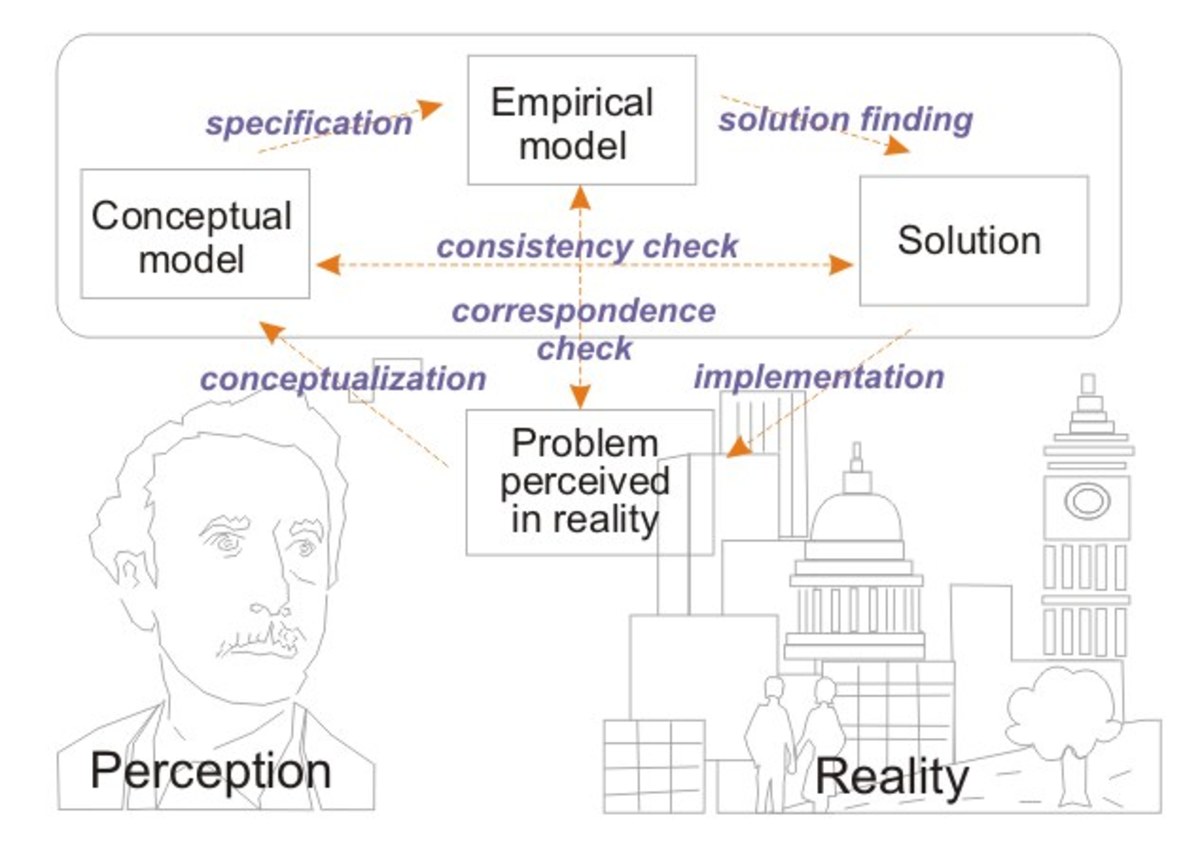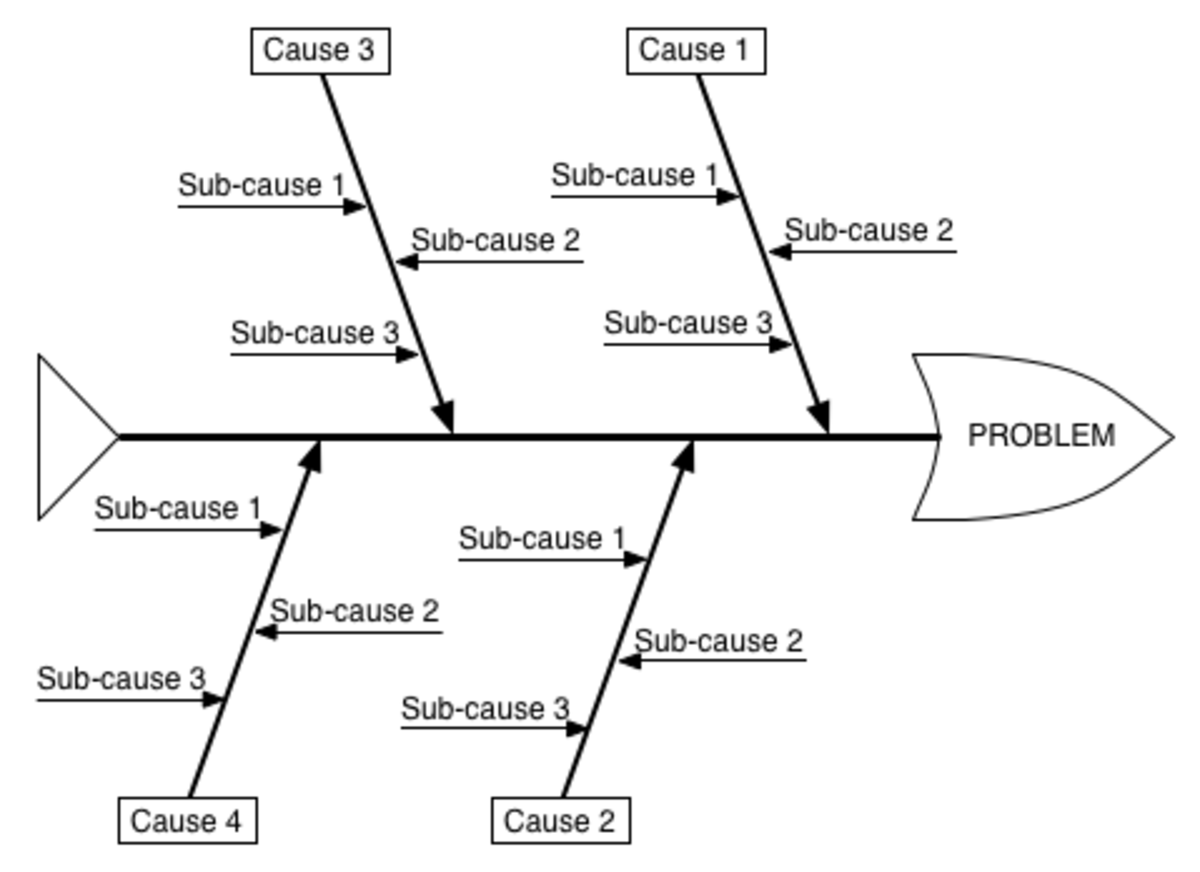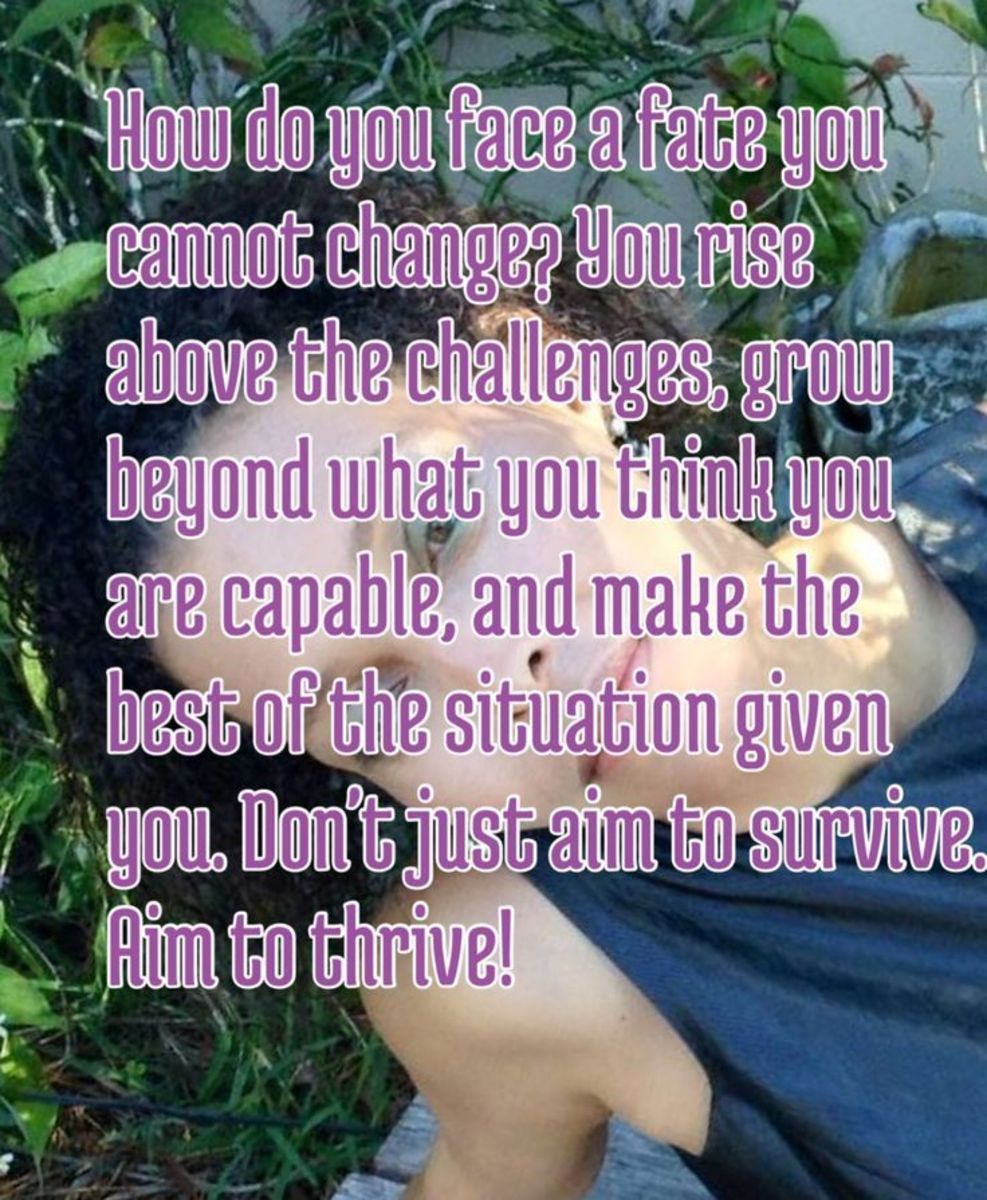Reclaim Your Energy—And Change Your Life!
I don't feel like it!

How One Woman Shifted From Problem Solving to Creating— And Created the Life and Work She Longed For!
***
"I merely took the energy it takes to pout and wrote some blues.” — Duke Ellington
Often, unlike Duke Ellington, when things do not go the way we want them to go, we pout. Yes, pout! You know that upset children pout often. But adults such as you and I sometimes pout, too.
To pout, states, the Concise Oxford Dictionary, is to form "an expression of bad temper or sulkiness" with one or both lips. It is also a whole-body way of showing disappointment, anger, or resentment, usually in silence.
Pouting is a not just a way to express sadness or displeasure. It’s often a way to manipulate others into feeling sorry for us when things do not go as we would like. It is a technique we resort to to try and change how others think about and act toward us. It is an attempt make things go our way, when they are not.
But pouting, like other problem-solving techniques often backfires - especially in adulthood. Instead of making things better, it makes them worse.
When their problem-solving techniques fail to produce real and lasting results, habitual problem solvers often feel like victims of circumstance. Pouting is also a way of expressing a victim story.
People who tell themselves victim stories tend to pout a lot. And pouters often see themselves a victims. They do so because, not only is it depressing to focus on problems, it is doubly depressing to invest time, energy, and effort doing so, only to find that your efforts do not produce the results you want.
But pouting can become a problem that makes things worse. In fact, the physical act of pouting can make you feel depressed. Depression saps your energy and erodes your inclination to act. Lack of action leads to a lack of results. Bummer! It’s a vicious circle.
However, by shifting your focus, that vicious circle can be reversed.
I don't feel like it, but doing it makes me feel good!

The Energy It Takes To Pout
I think Duke Ellington captured the essence of the shift from a depressing, problem-driven focus to the energizing, future-focused stance of the creator when he said, “I merely took the energy it takes to pout and wrote blues tunes with it.”
The Duke’s soulful tunes were not solutions to problems. They were expressions of Ellington’s human spirit, acts of creating performed in spite of the problems he faced, and the pain he felt. Ellington’s courageous stance acknowledged problems and embraced their energy. He transcended those problems by creating songs of great power and reach.
Though sometimes sad, always soulful, the Duke’s blues tunes lift listeners, as they lifted him, above the sorrow, grief, and depression he suffered. Ellington’s blues songs, and his entire career are true creations, his gifts to the world.
All of us have the potential to take the energy it takes to pout and create results with it. But stuck in problem solving, focused on seeking relief from our bad feelings about our problems, many of us don’t realize that potential.
Worse, when we don’t, we judge ourselves as failing, which adds to our sense of helplessness. Indeed, over-relying on problem solving often results in a downward spiral into hopelessness, and a deep sense of despair about the future.
Shifting Just A Little
Sandra Brown, a client of mine, came close to being overwhelmed by despair. Married with two young children, Sandra taught piano lessons to supplement the slim income her husband squeezed out of a new small business. She told me that she longed to be a writer, but rarely found the time to put pen to paper. “There’s just too much for me to cope with,” she told me during our initial interview. “It’s overwhelming.”
I persuaded Sandra and her husband to take part in one of my local Creating What Matters Most workshops. During the second of five weekly sessions, Sandra sat with her arms crossed, and pursed both lips in a full-on pout.
When I probed, she complained that, in spite of her good intentions, she had done “absolutely nothing” during the past week. She grumbled that her house was a mess and she couldn’t do anything creative until she got it cleaned.
“But,” she stressed, “I did nothing but clean house all week. I never got around to practicing piano or working on the short story I promised myself I’d start. And at the end of the week, my house was messier than ever!”
She leaned forward in her chair, head down, hands between her knees. She looked like she might start crying. I asked her how she approached her day.
“Well,” she said, “First thing in the morning, I make a to-do list. I have to get the clutter out of the way before I can do what I enjoy. But it seems as if I spend all day dealing with tasks on the list, yet hardly get any of them done.”
“That must be frustrating,” I said.
“Yes!” she said, “It drives me crazy. I fear there’s no way I will cope.”
“Are writing and playing the piano on your to-do list?” I asked.
“No,” she said, “just the things I need to do before I do those kind of things.”
“This week,” I said, “I’d like you to try an experiment. I’d like you to dedicate an hour each day to piano and writing. And that hour should be first thing in the morning.”
“But,” she said, looking panic-stricken, “my mother-in-law is coming next week.” She shook her head, snorted out a little laugh, and said, “If I spend all that time doing creative stuff, how will I get my chores done? I don’t have that much energy at the best of times.”
“Trust me,” I told her, “Try this for a week, and we’ll talk about it next session.”
“Okay,” she said, but her face showed skepticism. A week later, a bright-eyed Sandra reported she’d had one of the most productive weeks in months. “I practiced piano every day,” she said, beaming with pride. “I enrolled a couple of new piano students. I started my short story, and I wrote a piece on juggling the demands of music and mothering. I'll try to sell it to a parenting magazine.”
“What about your house,” another participant asked. “Did you get it cleaned?” “Yes!” said Sandra “It was amazing. I didn’t focus on it. I didn’t obsess. I just picked stuff up and cleaned while I bustled about doing the stuff I liked. And, like magic, it all got done.”
In the discussion that followed, it became clear that magic wasn’t involved.
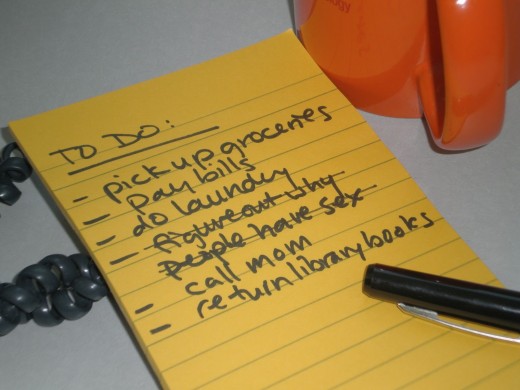
Tapping Into the Energy of Creation
When Sandra shifted her focus from her list of problems to creating results she cared about, she shifted from an energy-draining way of organizing her days to an energy-generating way creating what matters. She put first things first, took action, and discovered that she had energy to burn.
“It’s true,” she said. “All those weeks I said I worked so hard yet felt overwhelmed? Really, I was pouting, feeling sorry for myself. Mostly, I sat in my kitchen drinking coffee, staring at my list, and trying to scare myself into action. Or guilt myself into it, if fear didn’t work. “But, by three or four in the afternoon,” she continued, “I’d be so depressed, I’d switch from coffee to wine. Then, when my husband came home complaining about a messy house, we’d have a huge fight and I’d put 'fix the relationship' at the top of my list of problems.”
She laughed, looked around the room, and said, “Crazy, eh?”
We all chuckled. But no one thought she was crazy. We’d all been there.
Sandra kept up her creating practice and sustained her shift to a results-focused stance. Over the next few years, she got a job teaching piano at a local conservatory. She took on the directorship of a forty person musical theatre ensemble. Along the way, she had a third child.
By shifting into a creator's stance, Sandra seeing herself as victim of circumstances. She stopped pouting, and tapped into that same, deep and lasting source of energy that Ellington used to write his blues tunes. When I saw her recently, she smiled and told me how well her life was going.
“How’s the house?” I asked mischievously.
“Good enough!” she said. “I’ve got so much good stuff going on now, I can’t afford to obsess about housecleaning it anymore. What needs to get done does.”
If Creating Is So Good, Why Don’t We All Do It?
Good question!
Moreover, if problem solving is so depressing and fails to produce results, why do people hold so tightly to it as a strategy?
There are several reasons people cling to problem solving, even though it doesn't work well. Habit is one. Problem solving is what we’ve learned. It’s what we know. It’s what we’ve always done. We get caught up in the process and don’t see other ways to produce results. Besides, in a perverse way, problem solving feels good. Even if it doesn’t work well, it gives us the illusion that we are making progress.
Problem solving is also ingrained into our culture. You can’t turn on the radio or TV or read a paper without some “expert” talking about problems and solutions as if they were the only ways of explaining and dealing with difficult and challenging situations.
As well, research on optimism and pessimism shows we tend to pick up our ways of explaining what happens to us mostly from our parents, particularly our mothers. If your mom described difficult and challenging situations as problems, you probably do too. If she took a pessimistic stance toward what happened to her, you may have picked up that tendency from her. If she pouted, you probably do too.
Pessimists not only focus on problems; they do so with a sense that their actions won't have much effect. It’s no wonder they get depressed more easily than optimists.
The primary reason that people hang on tightly to problem solving as a results-producing strategy is that they do not have an alternative approach. It is like the old saying, “to the person with a hammer, everything looks like a nail.” To those reliant on problem solving to produce results, everything looks like a problem.
Although most people intuitively know how to create results, few realize that they do. Moreover, because fewer still know how to consciously create anything but simple results, they automatically flail away at difficult situations with their problem solving hammers. This habitual reliance on problem solving makes it difficult for them to deliberately create results.
Only partly tongue in cheek, Robert Fritz summed up the reason for a lack of expertise in creating when he titled a book for teens A Short Course In Creating What You Always Wanted To Create But Couldn’t Before Because No One Ever Told You How Because They Didn’t Know How Either.
Until my problem-focused clients recognize their intuitive ability to deliberately create results, they feel victimized by their lives—incapable of creating what matters. But, when they master the basics of creating, the world of the creator—and its awesome power—opens to them.
Difficulties Don’t Have To Be Problems
“Before my husband and I learned to use the creating framework for integrating competing values and desires," Sandra told me, "we just oscillated back and forth between various problems, wasting time and energy. It was so hard. We’d feel like nothing we did worked. That’s when we’d start to pout. We couldn’t help it.”
Over time and with experience in creating, Sandra realized conflicting values were not a “problem” to solve, but just part of their ongoing reality that they could learn to transcend in favour of creating results.
Like the poet, Walt Whitman—who acknowledged his contradictions then exclaimed, “Very well then I contradict myself/(I am large, I contain multitudes.)”—the couple discovered they, too, could embrace and transcend contradictions in their values.
By creating hierarchies of value in which they organized choices and actions to support their most cherished values and highest aspirations, they also organized their values to support their emerging vision and purpose.
As conflict melted away, Sandra discovered it might be possible for her to create all of what she wanted, if she was patient and persisted in taking action and learning from her results. She started seeing problems as just normal parts of her current reality, and as raw material for her creative process.
“During the Creating What Matters workshop,” Sandra said, “we realized that most of what we called "problems" were best seen as realities to accept, and challenges to rise to. Letting go of our dependence on problem solving was a turning point for us.
“We quit focusing on negatives, and focused on results. We stopped pouting and took ownership for the results we wanted to create, regardless of what happened. Instead of draining us, this approach generated energy, which we used to create results. It was an amazing shift.
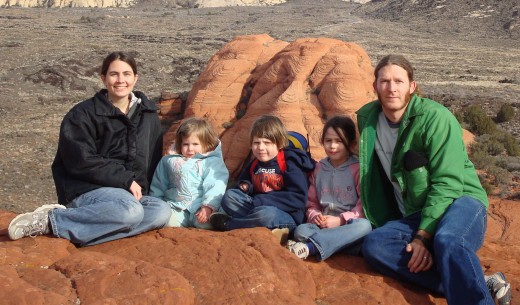
An Amazing Shift
It was an amazing shift. My life improved tremendously. I got more done with less effort, and with less stress and strain. I felt more satisfied and fulfilled. We became more ecologically responsible. And my husband's business took off.”
While he runs an award-winning micro-brewerie, I'm heading up a big band, leading a choir, and singing in another one. We go hiking as a family. We do things together. Things have completely turned around. And the house stays clean and tidy enough.
Sandra took back the energy it takes to pout. She used it to create the things that truly mattered to her in life, work, and relationships. After a year of personal life coaching help, and practicing the creating process described in in my new ebook Staying Up In Down Times - And Beyond!, Sandra and family were well on their way toward creating the simple yet rich, successful, and sustainable life they most wanted to live.
-------------
Bruce Elkin is an internationally-known author, Personal Life Coach and Success Coach. For more of his writing, please visit his HubPages Profile.
--------------------------
Taking Back the Energy It Takes To Pout!
Taking Back Your Energy For Life!
Duke's Blues




